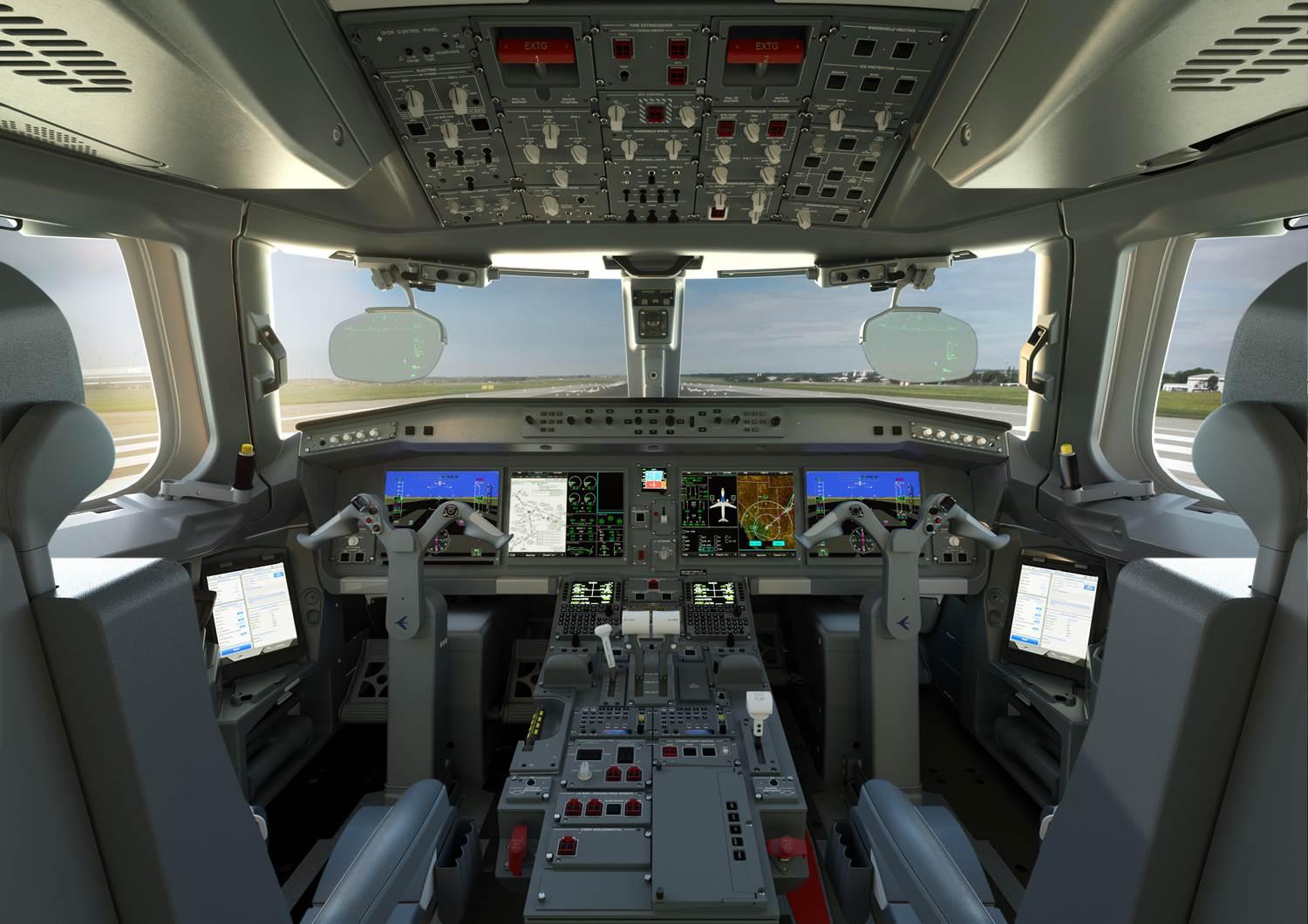
It’s a strange human trait that when faced with something rather complex, terms such as ‘mysterious’ and ‘dark’ are applied to them. Even with aircraft systems such as the cockpit voice recorder and flight data recorder, the term ‘black boxes’ is used, when most of the time they are a bright orange.
The avionics which control aircraft are often spoken of in similar tones, their vital work going on under the skin of the airplane away from view. A major upgrade to an avionics suite can, however, give rise to an aircraft being consider almost all-new. That’s how Boeing described its 737 Next Generation (NG) family back in the 1990s and also how Embraer talked about its E-Jets E2 family when the programme for its upgraded crossover narrowbody jet was announced at the 2013 Paris Air Show [it was only later that the company confirmed that every member of the family would also have its own wing design].
In developing the E2 family, Embraer turned to its original avionics suite provider on the E1, Honeywell, which offered its Primus Epic 2 suite to deliver the required upgrades. Underpinning the developments was a flight deck philosophy which ensured that the new design developed the human–machine interfaces in order to enhance pilot interaction while maintaining high level of flight deck commonality.
The first major change was that the five 8 inch x 10 inch displays were replaced with four 13 inch x 10 inch displays. The new displays give pilots a 45% increase in display area, enabling more relevant information to be on screen at any one time. The layout is designed to increase safety while reducing pilot workload. It also allows for further functions to be added as and when they are brought to market.
Within the Primus Epic 2 suite, improvements beyond the primary flight display (PFD) have been made in areas such as the synthetic vision system (SVS) and interactive navigation (INAV) system. According to Embraer, this pairing provides “a more intuitive instrument flight regardless of the time of day or weather conditions” and “improves pilot’s situational awareness of flight path, terrain, and navigational environment”.
The Next Generation FMS (flight management system) was designed to provide improved situational awareness and reduced operating costs. Within the package is a cost index element, which optimizes aircraft performance to reduce fuel consumption. This index is defined by a ratio of the cost of flight time to the cost of fuel.
Another FMS feature is for optimum descent profiles, which also allows engages from the top of the descent to enable lower fuel consumption. In a time when emissions from aircraft are under minute scrutiny, capabilities such as this and the cost index provide tangible and valuable benefits.
In terms of safety, the Primus Epic 2’s SmartRunway and SmartLanding provide cockpit situational awareness tools that, according to Embraer, “reduce the likelihood of incidents on approach, landing, taxi and takeoff”. SmartRunway incorporates an advanced RAAS (runway awareness and advisory system) while SmartLanding includes stabilized approach alerting.
When it was in development as the Bombardier C Series, the Airbus A220 family – the E2 family’s competitor in the crossover narrowbody jets segment – was a clean sheet design. The Canadian OEM opted for the Collins Pro Line Fusion suite. This, like the Epic 2, uses four large screens – 15 inch diagonal, high-resolution LCD displays able to utilise enhanced and synthetic vision applications – to once again reduce the workload for the flight crew.
The Fusion suite also includes the primary flight control computer (PFCC) and the Collins’ renowned MultiScan weather radar with predictive windshear. While these are included as standard, airlines can also opt for a single or dual Head-up Guidance System (HGS) to aid the pilots. Swiss, the launch operator for the A220-100 and the first to operate both models in the family, opted to take a dual HGS on its aircraft.
Other capabilities the Fusion suite offers to the A220 family include RNP AR (required navigation performance–authorisation required) 0.1 – meaning that the navigation system has to calculate the aircraft’s position to a point within a circle of 0.1 nm radius. The aircraft can also has a Category IIIa/b autoland capability.
As with the Primus Epic 2, Pro Line Fusion avionics have the ability to adapt as new features are brought to the market and airspace requirements change. This flexibility is seen by the OEMs as a major benefit as their customers are likely to operate the airplane for many years.
The choice of Pro Line Fusion avionics for the A220 was made back in 2008 when the family was launched at the Farnborough Air Show that year, while it is eight years since the Epic 2 was selected by Embraer. Developments in materials during the respective intervening periods will no doubt have delivered weight savings to add to the built into the designs.
Though their effects may not be seen by the naked eye, modern cockpit avionics certainly make themselves visible when management see their influence on operating costs.






Comments